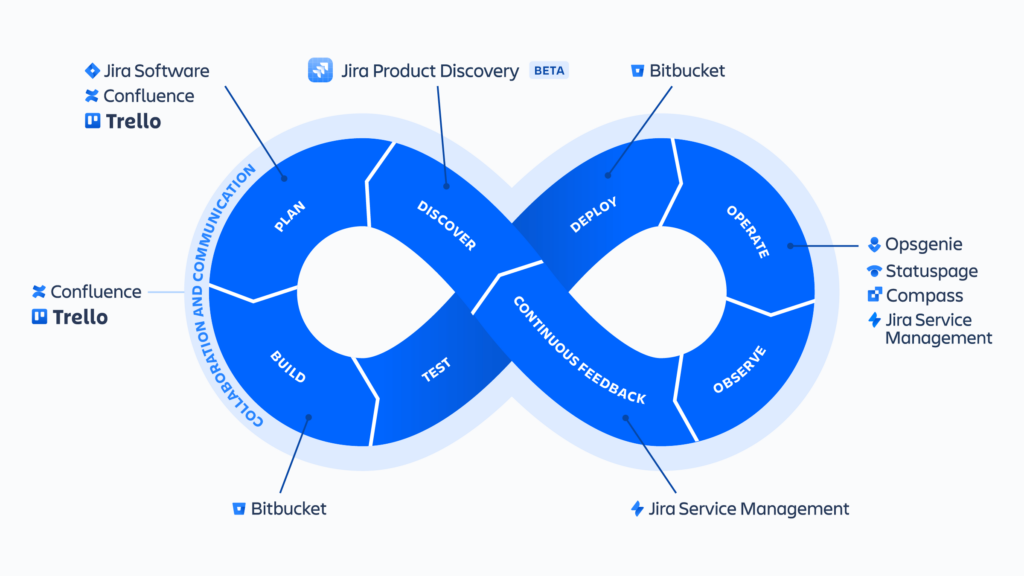Breaking Down Silos: How DevOps Delivers Faster, Compliant Software
In today’s fast-paced world, businesses need to be agile and adaptable. This extends to their software development process. Traditional approaches, with rigid silos between development (Dev) and operations (Ops) teams, can lead to slow delivery cycles and software that doesn’t meet compliance standards.
DevOps isn’t just a toolbox; it’s a cultural revolution, a mindset. While technology plays a supportive role, the core of DevOps is a mindset shift.

Understanding Silos as Isolated Environments
Imagine an organization where different departments, such as development, operations, and security, operate in isolation, each with their own processes, tools, and communication channels. This compartmentalization creates barriers that hinder collaboration, communication, and the flow of information.
In such a siloed environment, changes to software may take longer to implement due to the lack of coordination between teams. Issues may not be identified or addressed promptly, leading to delays and potential compliance breaches.
Breaking Down Silos for Agile Software Delivery
DevOps aims to break down these silos by fostering a culture of collaboration and shared responsibility across the entire software lifecycle. This involves:
- Integrating Development and Operations (DevOps): Teams work together from the beginning, rather than handing off tasks at different stages.
- Automating Repetitive Tasks: Automation eliminates manual, time-consuming processes, freeing up teams to focus on more strategic work.
- Continuous Integration and Continuous Delivery (CI/CD): Changes are integrated and deployed frequently, enabling rapid feedback and iteration.
- Monitoring and Feedback: Continuous monitoring provides insights for improvement, which are fed back into the development process.
By breaking down silos and adopting DevOps practices, organizations can achieve:
- Faster Software Delivery: Teams can deliver updates more frequently, responding quickly to market demands and customer needs.
- Improved Software Quality: Collaboration and shared ownership lead to higher quality software with fewer defects.
- Enhanced Compliance: Automated processes and continuous monitoring ensure consistent compliance with regulations and standards.
- Increased Innovation: Streamlined processes free up time for innovation, allowing teams to explore new technologies and features.

DevOps is more than just a set of tools; it’s a cultural shift that breaks down the barriers between development, operations, and technology. It fosters collaboration and communication, allowing teams to work together seamlessly throughout the entire software lifecycle. This holistic approach leads to several key benefits:
- Faster Delivery: By eliminating the handoffs and delays that occur in siloed environments, DevOps enables teams to deliver software updates more frequently. This allows businesses to respond quickly to changing market demands and customer needs.
- Improved Quality: Collaboration between Dev and Ops teams throughout the development process leads to higher quality software. Developers gain a deeper understanding of operational challenges, while Ops teams can provide feedback on potential issues early on.
- Enhanced Compliance: DevOps practices, like automated testing and infrastructure provisioning, ensure consistency and repeatability in the software development process. This helps organizations meet compliance requirements more effectively.
- Increased Innovation: By streamlining the development process, DevOps frees up time and resources that can be dedicated to innovation. Teams can experiment with new technologies and features more readily, leading to a competitive advantage.

How Does DevOps Work?
Here are some key principles of DevOps that contribute to its success:
- Shared Responsibility: Both Dev and Ops teams share ownership of the entire software lifecycle, fostering a sense of accountability and collaboration.
- Automation: Repetitive tasks are automated, freeing up human resources for more strategic activities. This includes infrastructure provisioning, testing, and deployment.
- Continuous Integration and Continuous Delivery (CI/CD): Changes are integrated and delivered frequently, allowing for faster feedback and quicker fixes.
- Monitoring and Feedback: Continuous monitoring of applications and infrastructure provides valuable insights for improvement. These insights are fed back into the development process for ongoing optimization.
DevOps in Cloud. Recommended lecture https://devops.com/category/blogs/devops-in-the-cloud/
DevOps Platforms: Beyond Atlassian
Atlassian is a major player in the DevOps space, but it’s not the only game in town. Here’s a look at some popular DevOps platforms and how they compare to Atlassian:

Atlassian
- Strengths:
- Strong project management tools like Jira
- Integrates well with other Atlassian products
- Large user community and extensive support
- Weaknesses:
- Can be expensive for large teams or complex workflows
- Limited features for some aspects of DevOps, like infrastructure management
Other Popular Platforms
- GitHub:
- Strengths:**
- Popular version control system (Git) tightly integrated with development workflow
- Large developer community and extensive automation features (GitHub Actions)
- Relatively affordable plans
- Weaknesses:**
- Project management features are less robust compared to Jira
- Limited built-in deployment capabilities
- Strengths:**
- GitLab:
- Strengths:**
- Open-source version control system with GitLab offering both free and paid plans
- Comprehensive DevOps toolchain including issue tracking, CI/CD pipelines, and container orchestration
- Strong security features
- Weaknesses:**
- User interface can be complex for beginners
- Setting up self-hosted version can require technical expertise
- Strengths:**
- Jenkins:
- Strengths:**
- Open-source CI/CD server with a large plugin ecosystem for customization
- Highly flexible and extensible
- Free to use
- Weaknesses:**
- Requires significant technical expertise to set up and manage
- User interface can be challenging for beginners
- Strengths:**
- CircleCI:
- Strengths:**
- Cloud-based CI/CD platform with a user-friendly interface
- Focuses on speed and performance
- Good integrations with popular cloud providers
- Weaknesses:**
- Limited customization options compared to Jenkins
- Can be expensive for large teams with high build volumes
- Strengths:**
Choosing the Right Platform
The best platform for you depends on your specific needs and priorities. Here are some factors to consider:
- Team size and complexity of workflows: Larger teams and complex workflows might benefit from a more comprehensive platform like Atlassian or GitLab.
- Budget: Open-source options like Jenkins are free, while cloud-based platforms often have subscription fees.
- Technical expertise: Setting up and managing some platforms requires more technical knowledge than others.
- Existing tools and integrations: Consider how the platform integrates with your existing development and operations tools.
Atlassian offers a robust set of tools for DevOps, but exploring other options like GitHub, GitLab, Jenkins, and CircleCI can provide a good fit depending on your specific needs and budget. Ultimately, the best platform is the one that helps your team achieve faster, more efficient, and more secure software delivery.
IBM Technology
DevOps is not a one-size-fits-all solution, but rather a set of principles and practices that can be adapted to fit the specific needs of an organization. By breaking down silos and fostering collaboration, DevOps empowers teams to deliver high-quality, compliant software faster, giving businesses a competitive edge in the ever-evolving digital landscape.

